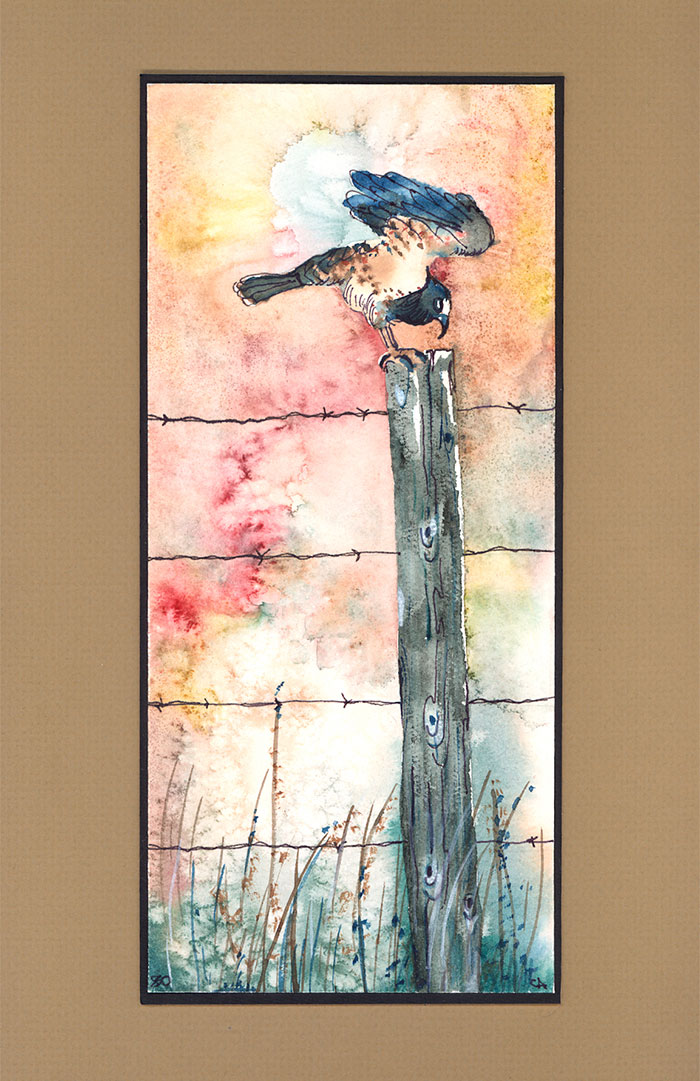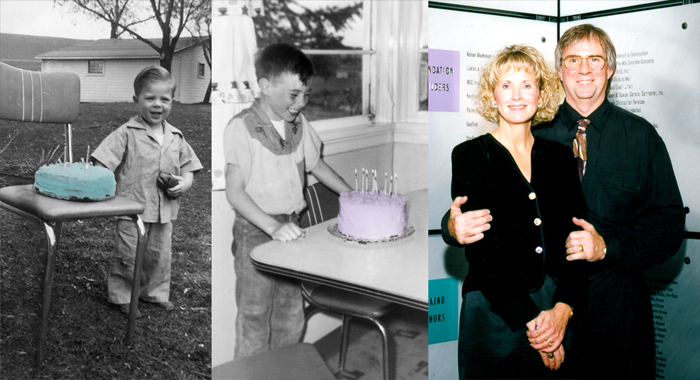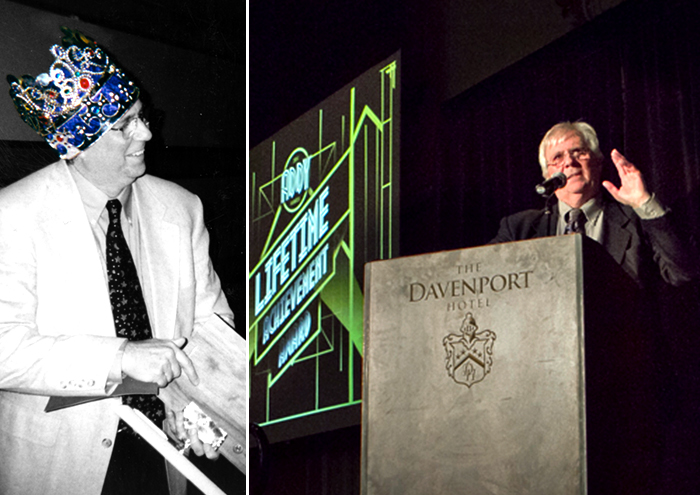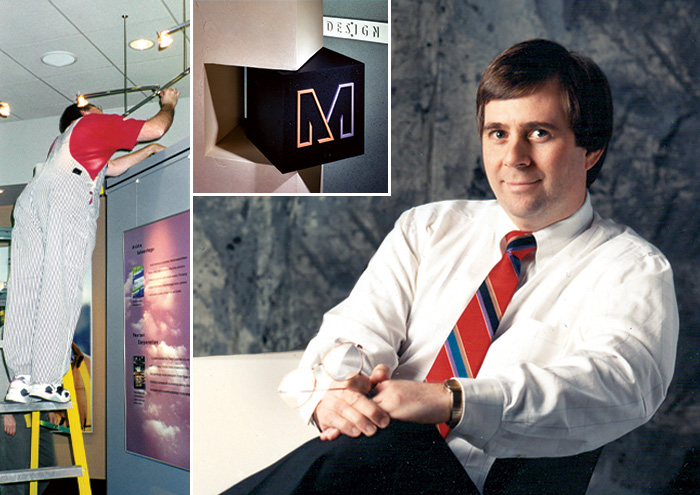Rummaging through some boxes in helveticka’s archives recently, I found this painting in an unmarked folder containing back issues of High Times and old Taco Bell receipts. Intrigued, I set out to determine its provenance. Over the past couple of months, I consulted with horticulturalists, art historians, and ornithologists for clues as to who may have created it. All were dead ends: The flora in the foreground is ambiguous, the style is unrelated to any particular period, the bird is a breed previously unknown to science.
It wasn’t until I made a call to Dr. Ludlow Bushmat, eminent psychiatrist at the Calhoun County Hospital for the Clinically Insane near Possum Trot, Alabama, that some progress was finally made. The following is a transcript of our conversation:
AB: So what do you make of this painting, Dr. Bushmat?
LB: To be perfectly honest, Aaron, I’ve never seen anything quite like it. Whoever created this is clearly suffering from a deep psychosis.
AB: What—is it really that bad?
LB: Oh, no. In fact, it’s actually quite good. The technique—what’s called “salting the watercolor”—is masterful. It’s just that, well…perhaps I shouldn’t say.
AB: Please. Go on, doctor.
LB: Note the randomness of spikes in the strands of barbed wire. There’s no order. No consistency. It’s almost as if…as if…
AB: Yes? Yes?
LB: As if the artist had NEVER SEEN BARBED WIRE BEFORE!
AB: [audible gasp]
LB: There’s more.
AB: Tell me.
LB: The fencepost—see all the knots? I count four. The same number as wires. The artist is definitely male.
AB: But…how…?
LB: Numerology. Google it.
AB: [the sound of laptop keys clicking rapidly]
LB. It’s the colors, though, that point to something sinister.
AB: What about them?
LB: The artist has no regard for convention. Have you a window nearby?
AB: Um…yeah…
LB: Look outside. Go on.
AB: [looks outside] Okay…?
LB: There. The sky is blue, isn’t it? Anyone can see that. For the artist to render it as he did here—pinks, oranges, greens, reds—is to flout the very laws of nature. This person clearly has a God complex. Please…be careful. You may not like what you find out.
That was two weeks ago. And though Dr. Bushmat offered some clues as to the identity of the mysterious artist, I realized that I was, in fact, no closer to to the truth. Until yesterday.
As I once again found myself studying the enigmatic painting—practically willing it to reveal its secrets—Skooch happened to walk by my office. “What’s that?” he asked.
“It’s…nothing,” I sighed, pushing it aside. “Just a stupid watercolor.”
“Who painted it?”
Skooch’s youthful innocence was grating; his wide-eyed optimism a constant thorn in my side. “That’s just it,” I snarled back at him. “We don’t know. We can’t know. It’s…no use.” I swiveled my chair back around and pretended to work.
“So, um…why don’t you turn it over and find out?”
Before I could respond, Skooch had reached down and flipped the painting over. And there it was: a signature, in red, and a date. “Chuck Anderson, 1980.” Above it was what appeared to be a grade: “A.”
Could it be? An artifact from CK’s misspent youth? A lost assignment from Chris Nylander’s watercolor class at Spokane Falls Community College—back when Charo was a thing and the entire country wondered who shot JR? And did the brash 20-year-old really earn an A?
Yes, yes, and…yes. After all, as Dr. Bushmat observed, it is, in fact, quite good.
The long-lost piece is even now being cleaned, restored, and prepared for framing. A private collector has already learned of its existence and secured the necessary financial backing to purchase it. There will, however, be a brief period of time in which it will be on display at helveticka world headquarters. Due to overwhelming demand, viewings are by appointment only.
We recommend calling today.





